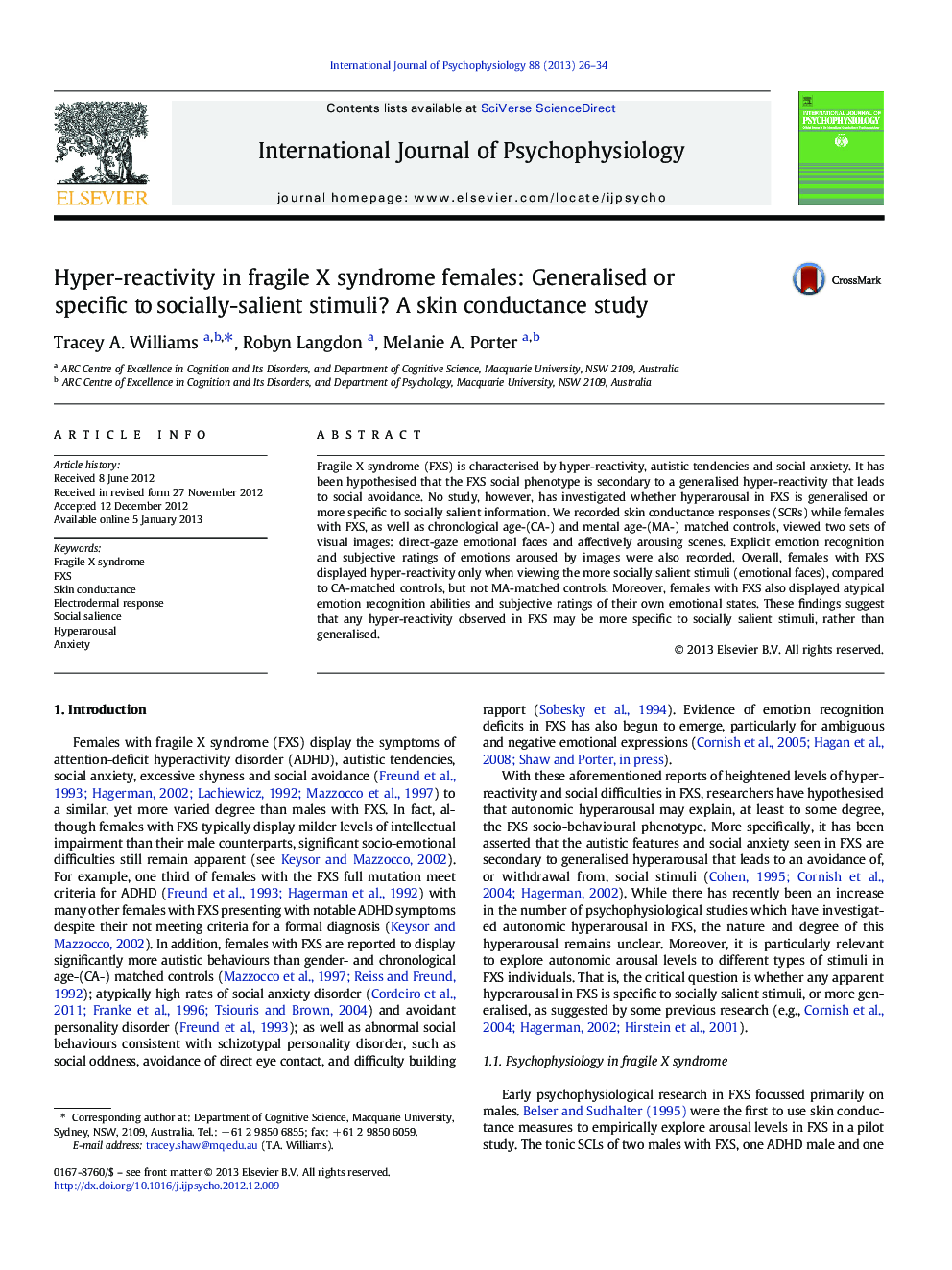| کد مقاله | کد نشریه | سال انتشار | مقاله انگلیسی | نسخه تمام متن |
|---|---|---|---|---|
| 930399 | 1474432 | 2013 | 9 صفحه PDF | دانلود رایگان |

Fragile X syndrome (FXS) is characterised by hyper-reactivity, autistic tendencies and social anxiety. It has been hypothesised that the FXS social phenotype is secondary to a generalised hyper-reactivity that leads to social avoidance. No study, however, has investigated whether hyperarousal in FXS is generalised or more specific to socially salient information. We recorded skin conductance responses (SCRs) while females with FXS, as well as chronological age-(CA-) and mental age-(MA-) matched controls, viewed two sets of visual images: direct-gaze emotional faces and affectively arousing scenes. Explicit emotion recognition and subjective ratings of emotions aroused by images were also recorded. Overall, females with FXS displayed hyper-reactivity only when viewing the more socially salient stimuli (emotional faces), compared to CA-matched controls, but not MA-matched controls. Moreover, females with FXS also displayed atypical emotion recognition abilities and subjective ratings of their own emotional states. These findings suggest that any hyper-reactivity observed in FXS may be more specific to socially salient stimuli, rather than generalised.
► SCRs to direct-gaze emotional faces and affective scenes were explored.
► FXS females displayed hyperarousal to emotional faces compared to CA controls only.
► FXS females displayed atypical emotion recognition abilities and subjective ratings.
► Hyperarousal observed in FXS may be more social-specific rather than generalised.
Journal: International Journal of Psychophysiology - Volume 88, Issue 1, April 2013, Pages 26–34